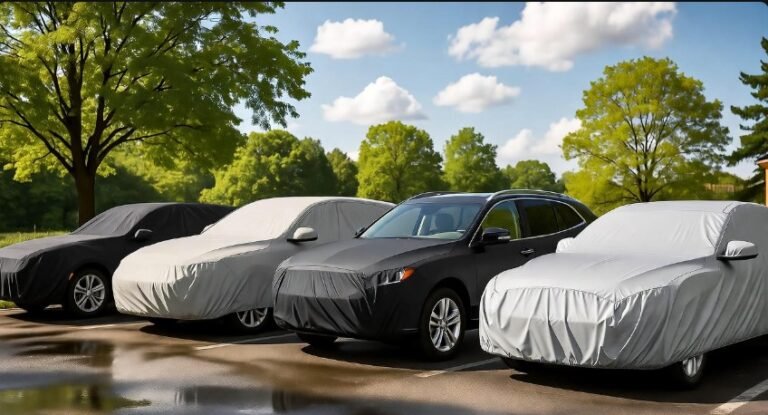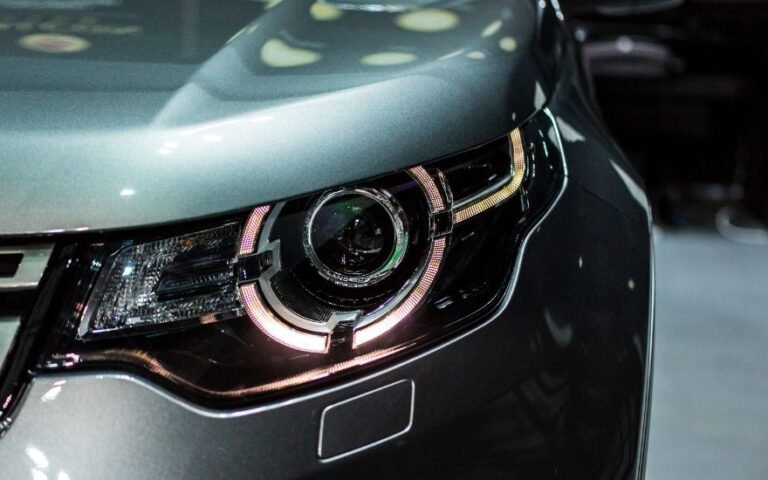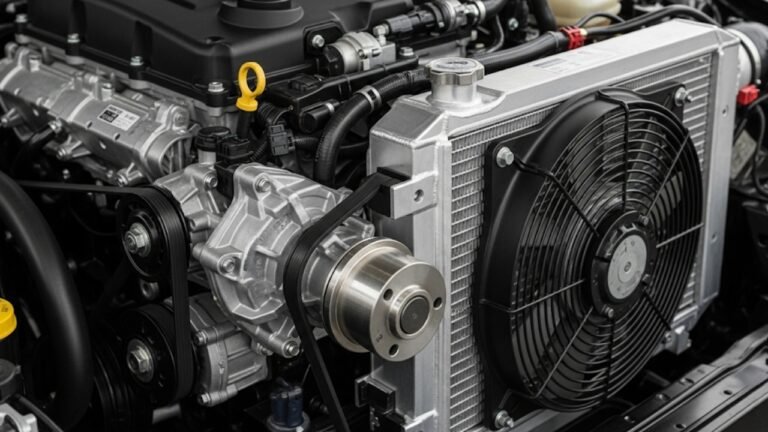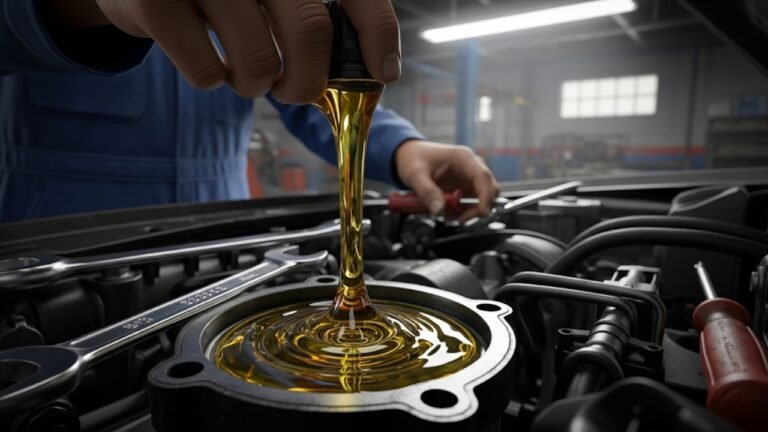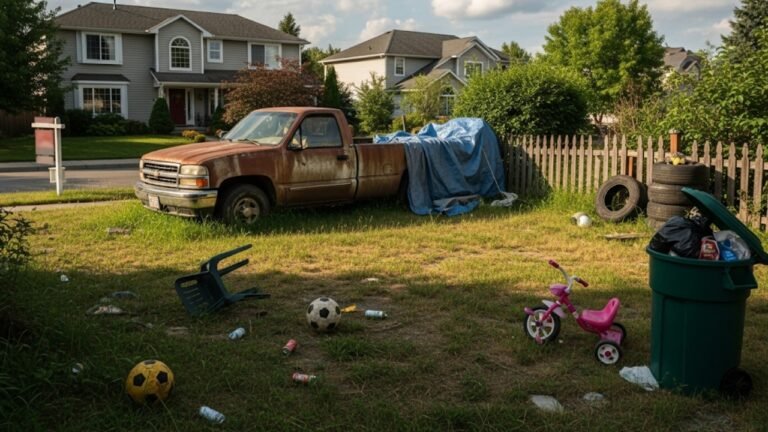How Much Does Auto Tint Cost? [Calculator Included]
![How Much Does Auto Tint Cost? [Calculator Included] 1 How Much Does Auto Tint Cost [Calculator Included]](https://aautomotives.com/wp-content/uploads/2025/10/How-Much-Does-Auto-Tint-Cost-Calculator-Included-1.jpg)
Introduction: Why Car Window Tinting is Worth Every Penny
If you’ve ever sat in your car on a blazing summer day, you know the feeling — your seats feel like hot coals, and the steering wheel could fry an egg. That’s where auto window tinting steps in. Beyond looking sleek, tinting your car windows offers real, tangible benefits. It blocks harmful UV rays, keeps your interior cooler, reduces glare, and provides a layer of privacy that makes driving more comfortable and secure.
But before jumping in, it’s natural to ask the million-dollar question: how much does auto tint cost? The answer depends on several factors — from your car’s make and model to the type of tint film you choose. In this detailed guide, we’ll break it all down for you, show you how to calculate your specific cost, and even give you a free Auto Tint Cost Calculator to estimate your expense before you book an appointment.
Let’s explore the world of window tinting and uncover how you can make a smart, budget-friendly decision without compromising quality.
The Average Cost of Auto Tinting
![How Much Does Auto Tint Cost? [Calculator Included] 2 The Average Cost of Auto Tinting](https://aautomotives.com/wp-content/uploads/2025/10/The-Average-Cost-of-Auto-Tinting.jpg)
When it comes to auto tint cost, there’s no single price that fits all. It can vary depending on your vehicle type, window size, film quality, and installer experience. However, most car owners spend between $100 and $500 for professional tinting. Smaller cars or tinting only two front windows can be done for around $59–$150, while full tint jobs on larger SUVs or luxury vehicles may cost up to $999.
Here’s a quick snapshot:
| Vehicle Type | Basic Tint (All Windows) | Premium Tint (All Windows) |
|---|---|---|
| Coupe | $199 – $549 | $499 – $999 |
| Sedan | $199 – $549 | $499 – $899 |
| SUV | $269 – $725 | $599 – $999 |
| Truck | $169 – $619 | $499 – $899 |
| Tesla Models | $399 – $865 | $609 – $1,099 |
These prices reflect typical shop rates in the U.S., but location plays a role too. A tint job in Los Angeles or Miami might cost more than in a smaller city. Always compare quotes, and remember — cheaper doesn’t always mean better. Quality tint films last longer, block more UV rays, and resist fading.
How to Use the Auto Tint Cost Calculator
To help you get a quick estimate of your car tinting cost, use this simple calculator logic:
Step 1: Select your vehicle type — Coupe, Sedan, SUV, Truck, or Tesla.
Step 2: Choose which windows you want tinted — all windows, front two, single, rear, or windshield.
Step 3: Click “Calculate” to get an estimated price range.
For example:
-
Tinting all sides and the rear window of a sedan might cost $199–$549.
-
Tinting only the front two windows could be $99–$269.
-
A full Tesla Model 3 tint could reach $865 because of its large panoramic rear glass.
This calculator gives you a ballpark figure — actual prices depend on your chosen tint type and installer.
What Affects the Cost of Auto Tinting?
So, what makes one tint job cost $150 and another $800? Several factors influence auto tint cost, and understanding them helps you make an informed decision.
-
Type of Tint Film
The type of film you choose makes the biggest difference. Basic dyed films are the cheapest, while ceramic films are top-of-the-line.-
Dyed Tint: $59–$150 (affordable, decent privacy, lower UV protection).
-
Metalized Tint: $100–$250 (reflective, good heat reduction, may interfere with signals).
-
Carbon Tint: $150–$400 (excellent heat rejection, fade-resistant).
-
Ceramic Tint: $250–$900 (premium, superior heat and UV blocking, long-lasting).
-
-
Number of Windows
The more windows you tint, the more material and labor are needed. A coupe is cheaper than a large SUV or van. -
Vehicle Type and Size
Compact cars have smaller windows, while trucks, vans, and Teslas often have complex shapes or panoramic roofs that need extra skill and film. -
Location
Labor rates differ from city to city. High-end urban shops charge more than smaller-town installers. -
Installer Experience
An experienced, reputable tint shop may cost a bit more, but it’s worth it. Poor installation can lead to peeling, bubbling, or legal violations. -
Warranties and Extras
Some films come with lifetime warranties or additional scratch resistance, which adds to the price but protects your investment long-term.
Cost Breakdown by Vehicle Type
Let’s get more specific. Here’s how the average car tinting cost breaks down for different vehicle categories:
1. Coupes
Coupes are smaller vehicles with fewer windows, so tinting them is generally more affordable. You can expect to pay between $69 and $549 depending on the tint type and coverage.
-
All sides and rear window: $199–$549
-
Front two windows: $99–$259
-
Single window: $69–$129
-
Back window: $99–$279
-
Windshield: $119–$299
-
Sunroof: $79–$169
If you’re on a budget, starting with just the front two windows is a smart move. Later, you can upgrade the rest.
2. Sedans
Sedans are the most common vehicles to tint. Because they have more glass surface area than coupes, prices are slightly higher. Expect to spend between $199 and $549 for a full tint.
-
All sides and rear window: $199–$549
-
Front two windows: $99–$269
-
Back window: $99–$279
-
Windshield: $119–$299
-
Panoramic Sunroof: $109–$299
If you often drive during the day, consider ceramic tint on the windshield to reduce glare and heat. It’s pricier but extremely effective.
3. Trucks
Tinting trucks can vary a lot depending on cab size. Standard cabs are cheaper, while crew cabs can cost much more because of their larger windows.
Typical range: $169–$619.
-
Standard Cab (all windows): $169–$469
-
Extended Cab (all windows): $199–$569
-
Crew Cab (all windows): $219–$619
-
Back window: $89–$259
-
Windshield: $129–$299
Trucks with large rear glass panels benefit from high-performance films to reduce interior fading and glare during long drives.
4. Vans
Vans usually have more windows, meaning more tint film and labor. The average van tint cost is $269–$725.
-
All sides and back: $269–$725
-
Single window: $69–$129
-
Back window: $89–$269
-
Windshield: $129–$299
-
Sunroof: $69–$169
If you use your van for transporting family or clients, darker tints improve privacy while keeping the cabin cool and comfortable.
5. SUVs
SUVs have large windows and often include panoramic sunroofs, which make tinting slightly more expensive. Typical cost ranges from $269–$725.
-
All sides and back window: $269–$725
-
Back window: $79–$259
-
Windshield: $129–$299
-
Panoramic Sunroof: $109–$299
SUV owners often opt for ceramic or carbon films because these vehicles tend to have more interior exposure to sunlight.
6. Teslas
Tinting Teslas requires extra care because metalized films can interfere with sensors and electronics. Only non-metallic films should be used. Teslas also have large curved glass areas, increasing the labor cost.
Average Tesla tint cost: $399–$865.
-
Model S (all sides + back): $399–$609
-
Model X or Y (all sides + back): $459–$725
-
Model 3 (all sides + back): $865
-
Windshield (Model X): $725–$755
-
Panoramic Roof (Model Y): $725–$755
These prices reflect the specialized tools and expertise required for Tesla glass curvature.
The Hidden Benefits of Car Window Tinting
Many people think of window tinting as purely aesthetic, but it’s much more than that. Let’s explore some of the real benefits behind your auto tint cost investment:
-
Heat Reduction: Keeps your car cool even in direct sunlight.
-
UV Protection: Blocks up to 99% of harmful UV rays, protecting your skin and upholstery.
-
Glare Reduction: Makes driving safer, especially during sunrise or sunset.
-
Privacy and Security: Keeps prying eyes out, whether you’re parked or driving.
-
Aesthetic Appeal: Gives your car a modern, sleek look that turns heads.
-
Energy Efficiency: Reduces air conditioner use, saving fuel over time.
Each of these benefits adds long-term value, making window tinting more than just a cosmetic upgrade — it’s an investment in comfort and safety.
Are You Overpaying for Auto Tint? How to Check
It’s easy to get confused with all the price variations. To avoid overpaying for your auto tint, follow these tips:
-
Compare at Least 3 Shops: Get multiple quotes — prices vary widely even within the same city.
-
Check Warranty Terms: Good films come with lifetime or 10-year warranties.
-
Avoid Super Cheap Deals: Low prices may mean poor-quality films that fade or bubble within a year.
-
Ask About Removal Fees: If you have old tint, removing it can cost extra ($50–$150).
-
Verify Legal Tint Limits: Each U.S. state has its own laws on window darkness (VLT%). Don’t risk fines.
DIY Auto Tinting: Can You Really Save Money?
If you’re handy with tools and don’t mind a little challenge, DIY auto tinting might be an option to save some cash. A professional tint job can cost a few hundred dollars, but a DIY car window tint kit is usually between $30 and $100, depending on the film type and brand.
However, before you grab your squeegee and spray bottle, consider a few important things. Tinting windows is trickier than it looks. One wrong move — like trapping air bubbles, folding the film, or misaligning edges — can ruin the finish. The cost of redoing it might end up being more than professional installation.
If you’re confident and patient, DIY can still work. Just make sure to:
-
Buy pre-cut tint kits specific to your car model for easier installation.
-
Work in a clean, dust-free area to prevent contamination under the film.
-
Use professional tools like a heat gun, squeegee, and sharp blade for a smooth finish.
-
Follow local tint laws to avoid legal trouble.
DIY tinting is satisfying if done right, but for most people, professional installation gives better results, stronger warranties, and a cleaner look — especially for curved or frameless windows.
Professional vs. DIY Tinting: Which One Wins?
The big debate: Should you go pro or DIY? Let’s break it down.
| Feature | Professional Tinting | DIY Tinting |
|---|---|---|
| Cost | $100–$800 | $30–$100 |
| Quality | High – even finish, long-lasting | Depends on your skill |
| Warranty | Usually included | Rarely available |
| Time | 1–3 hours | 4–6 hours (or more) |
| Risk | Low | High (bubbles, peeling) |
| Tools Needed | Provided by shop | Must buy separately |
Verdict: If you’re after durability, style, and peace of mind, professional tinting wins every time. But if you love DIY projects and want to save some money, doing it yourself can be fun and educational — just be ready for trial and error.
Legal Limits: What’s the Law on Car Tinting?
Before you tint your car, it’s vital to know your state’s window tint laws. Each state sets its own regulations for how dark or reflective your tint can be, measured as Visible Light Transmission (VLT) — the percentage of light that passes through your windows.
Here are some general guidelines (but always check your local DMV for updates):
-
Front Side Windows: Must allow 30–70% of light in most states.
-
Rear Windows: Usually more lenient; some states allow any darkness.
-
Windshields: Only a small strip (top 4–6 inches) can be tinted.
-
Reflective Tints: Often limited to avoid mirror-like finishes.
Failing to comply can lead to fines or forced removal. Some states like California and New York have stricter laws, while states like Florida or Texas are more relaxed. Always verify before installation to avoid costly do-overs.
Why Tesla Tinting Costs More Than You Expect
If you drive a Tesla, you might have noticed that tinting quotes are higher than average. That’s not a scam — it’s because Tesla glass is unlike regular vehicles. For example, the Model 3’s rear window extends into the roof, forming a single giant glass panel. Tinting it requires precision, extra-large film sheets, and often two technicians working together.
Also, metalized tints can’t be used because they interfere with Tesla’s built-in antennas and sensors. Instead, professionals use non-metallic ceramic tints, which are pricier but safer for the car’s electronics.
So, while you might pay $700–$865 for a full Tesla tint, it’s a specialized job that ensures top-notch results without affecting your car’s technology. Think of it as paying for expertise — and peace of mind.
How to Save Money on Auto Tint Without Losing Quality
Tinting your car doesn’t have to break the bank. Here are simple ways to save money without compromising quality:
-
Shop Around: Get at least 3–5 quotes. You’ll be surprised how prices vary even for the same job.
-
Ask About Packages: Some shops offer bundle deals (e.g., all windows + windshield = discount).
-
Choose Mid-Grade Films: Instead of premium ceramic, a good-quality carbon film offers great UV protection at half the price.
-
Wait for Seasonal Discounts: Tint shops often run promotions during spring and summer.
-
Skip Rarely Used Windows: If your sunroof is always covered, tinting it may not be necessary.
-
Consider Partial Tinting: Start with front windows and upgrade later.
-
DIY Small Jobs: Try tinting a single small window yourself if you want to test your skills.
Being smart and strategic helps you get the benefits of auto window tinting while staying within your budget.
Frequently Asked Questions (FAQs)
1. How can I get the most accurate estimate for my auto tint cost?
Use an auto tint cost calculator to estimate your price. Then call 2–3 tint shops, mention your car’s make, model, and which windows you want tinted. Ask about warranties and any hidden fees. Comparing quotes helps you get the best deal.
2. Is window tinting really worth it?
Yes. Beyond the cool look, tinting blocks UV rays, keeps your car cooler, protects your skin and interior, and enhances privacy. Over time, it can even save money on fuel by reducing AC use.
3. Can window tinting increase my car’s resale value?
While tinting doesn’t drastically raise resale value, a clean, professional tint can make your car more attractive to buyers. However, poor or illegal tinting can reduce value — so always stay compliant with local laws.
4. Why is ceramic tint more expensive?
Ceramic films use advanced technology that blocks heat and UV rays without affecting visibility or radio signals. They’re more durable, don’t fade, and often come with lifetime warranties — that’s why they cost more.
5. Can I tint my windows myself?
You can, but it takes practice. Without experience, you might end up with air bubbles, creases, or dust trapped under the film. For most car owners, professional tinting is worth the extra cost.
6. How long does tinting take?
A professional tint job usually takes 1–3 hours, depending on the number of windows and the complexity of your vehicle. Teslas or large SUVs might take up to 5 hours.
7. Does tinting affect my insurance or warranty?
Tinting usually doesn’t affect car insurance or manufacturer warranties, as long as it’s done legally and professionally. However, illegal tint levels might void coverage in some cases.
Final Thoughts: Is Auto Tinting a Good Investment?
So, how much does auto tint cost? On average, you’ll pay between $100 and $500, depending on your vehicle and tint type. While that might seem like a splurge, the long-term benefits far outweigh the cost. You get protection from UV rays, better comfort, a cooler cabin, and a sleeker look — all while preserving your car’s interior.
If you’re still unsure, start small. Tint your front windows first and see how much difference it makes. Once you experience the cooler ride and added privacy, you’ll likely want to tint the rest.
Remember — tinting isn’t just about looks; it’s about comfort, safety, and protecting your investment. Choose the right film, find a trusted installer, and use our calculator to budget wisely.
Your car deserves the best — and with the right tint, it’ll not only look better but feel better too.

